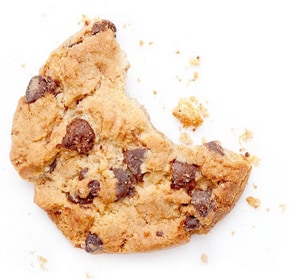Jivi® Clinical Study Data: Ages 7 to <12
PROVEN SAFETY AND EFFICACY WITH JIVI
Study Design for Children Ages 7 to <12
PROTECT Kids
A multi-center, prospective, single-arm trial to evaluate the pharmacokinetics, safety and efficacy of Jivi for prophylaxis and treatment of bleeding in previously treated children <12 years of age with severe hemophilia A (n=73).1
Alfa-PROTECT
A multi-center, prospective, single-arm study to evaluate the safety of Jivi infusions for prophylaxis and treatment of bleeding in previously treated children 7 to <12 years of age with severe hemophilia A (n=35).1
The PROTECT Kids and Alfa-PROTECT data were pooled as both studies included participants 7 to <12 years of age. The studies were designed to describe the safety and clinical efficacy of Jivi in previously treated participants 7 to <12 years of age with severe hemophilia A.1
Characteristics of Pooled Analysis Set1
Previously-treated patients (7 to <12 years of age)*
57*
Treatment duration (main efficacy period)
26 weeks
Main efficacy analysis group
42 (prophylaxis twice weekly)†
*The efficacy of prophylactic treatment was assessed in 57 patients 7 to <12 years of age across PROTECT Kids and Alfa-PROTECT
†15 patients were on an extended interval regimen (every 5 days or every 7 days) in PROTECT Kids, so they are not included in the efficacy data
PROVEN SAFETY AND EFFICACY WITH JIVI
Safety Data for Children Ages 7 to <12
A Factor VIII Product with a Demonstrated Safety Profile
The most common adverse reactions (incidence ≥5%) in clinical trials in previously treated patients (PTPs) ≥7 years of age were headache, fever, cough and abdominal pain.1
- There were no study drug-related serious adverse events2
- All drug-related events were mild or moderate2
- Drug-related AEs: 6.7% (n=4)2
- Zero FVIII inhibitors occurred2
One pediatric patient developed antibodies against PEG, a component of Jivi, causing Jivi not to work properly and causing his treatment to be interrupted. Patient restarted treatment with Jivi 2 months later after the antibodies went away.1
- Three pediatric patients had temporary antibodies to PEG and in two of them, their factor levels were slightly lowered. The recovery for the third patient was unclear.1
PROVEN SAFETY AND EFFICACY WITH JIVI
Study Dosing Frequency and Range
In the PROTECT Kids and Alfa-PROTECT pooled group, the dosing frequency was two times per week.1
Children (7 to <12 Years of Age)1* (N=42)
Jivi approved dosing for children 7 to <12 years of age: The recommended initial Jivi dosage regimen is 60 IU/kg twice weekly. The patient’s dose should be adjusted based on clinical response and/or recovery.1
*Pooled patients from PROTECT Kids and Alfa-PROTECT 7 to <12 years of age with at least a 3-month treatment period, modified intention-to-treat (ITT) set
EFFECTIVE BLEED PROTECTION WITH JIVI
Annualized Bleed Rates (ABRs)*
In the PROTECT Kids and Alfa-PROTECT studies, ABRs for treated bleeds were assessed for Jivi in patients 7 to <12 years of age. The median ABR for total bleeds, joint bleeds, spontaneous bleeds and trauma bleeds was zero.2
*Modified ITT population included patients with at least a 3-month treatment period
†Total bleeds include spontaneous bleeds, trauma bleeds and joint bleeds
‡Pooled patients from PROTECT Kids and Alfa-PROTECT 7 to <12 years of age, modified ITT set
EFFECTIVE BLEED PROTECTION WITH JIVI
Percent of Patients with Zero Bleeds
Percentage of patients with zero bleeds during the entire study period of 26 weeks was 67%.1 Given variation in patients’ treatment start date and exact study phase duration, zero-bleed rate data broken out by bleed type are presented for the last 24 weeks of the 26-week study period.
In the PROTECT Kids and Alfa-PROTECT studies, majority of patients experienced zero treated bleeds, including spontaneous bleeds, joint bleeds, trauma bleeds and target joint bleeds.2
*Total bleeds include spontaneous bleeds, trauma bleeds and joint bleeds
EFFECTIVE TREATMENT OF BLEEDS WITH JIVI
Bleed Control
In the PROTECT Kids and Alfa-PROTECT studies, a total of 36 bleeding episodes were treated with Jivi in the 7 to <12 year-old population. 97% of bleeds were successfully treated with one or two infusions. The mean (SD) follow-up time between infusions was one (0.8) day.1,2
PHARMACOKINETICS (PK)
Understanding PK
What is PK?
PK describes how a drug is absorbed, distributed, metabolized and eliminated by the body. These measurements help determine the drug’s dosing and duration of action.
PK Terms
- Area under the curve (AUC): The total amount of factor that is absorbed and distributed in your bloodstream over a period of time.
- Maximum concentration (Cmax): The highest amount of a drug in the blood measured after a dose. For a FVIII treatment, this is sometimes called FVIII level, and is measured in international units per deciliter (IU/dL).
- Half-life (t1/2): The amount of time it takes for factor levels to get reduced by half (50%) of what they originally were right after your infusion.
- Clearance (CL): The speed at which factor is eliminated from your body.
- Recovery: The estimated increase of factor VIII in your blood soon after an infusion of FVIII treatment.
PHARMACOKINETICS (PK)
PK Parameters of Jivi
Chromogenic Assay1 60 IU/kg
Results expressed as an average value known as arithmetic mean
AUC: area under the curve
Cmax: maximum drug concentration in plasma after single dose
t½: terminal half-life
CL: clearance
*n=131
†n=141
‡Data obtained from all patients’ recovery samples, excluding those with anti-drug antibodies, on a twice weekly regimen (n=42) with a range of 1.1-3.8 kg/dL1
JIVI — WITH THEM AS THEY GROW™
Dosing in Adults and Children
Dosing for Children 7 to <12 Years of Age
Unique Step-Wise Dosing for Patients ≥12 Years of Age
INDICATION
JIVI is an injectable medicine used to replace clotting factor (Factor VIII or antihemophilic factor) that is missing in people with hemophilia A.
JIVI is used to treat and control bleeding in previously treated adults and children 7 years of age and older with hemophilia A. Your healthcare provider may also give you JIVI when you have surgery. JIVI can reduce the number of bleeding episodes in adults and children 7 years of age and older with hemophilia A when used regularly (prophylaxis).
JIVI is not for use in children below 7 years of age or in previously untreated patients.
JIVI is not used to treat von Willebrand disease.
IMPORTANT SAFETY INFORMATION
You should not use JIVI if you are allergic to rodents (like mice and hamsters) or to any ingredients in JIVI.
Allergic reactions may occur with JIVI. Call your healthcare provider right away and stop treatment if you get tightness of the chest or throat, dizziness, decrease in blood pressure, or nausea. Allergic reactions to polyethylene glycol (PEG), a component of JIVI, are possible.
Your body can make antibodies, called “inhibitors”, against JIVI, or certain components of JIVI, such as polyethylene glycol (PEG), which may stop JIVI from working properly. Consult your healthcare provider to make sure you are carefully monitored with blood tests for development of inhibitors to Factor VIII. Tell your healthcare provider if you have been told you have inhibitors to Factor VIII.
If your bleeding is not being controlled with your usual dose of JIVI, consult your doctor immediately. You may have developed Factor VIII inhibitors or antibodies to PEG and your doctor may carry out tests to confirm this.
The common side effects of JIVI are headache, fever, cough, and abdominal pain.
These are not all the possible side effects with JIVI. Tell your healthcare provider about any side effect that bothers you or that does not go away.
Tell your healthcare provider about all your medical conditions that you have or had.
For additional important risk and use information, please see the full Prescribing Information.




